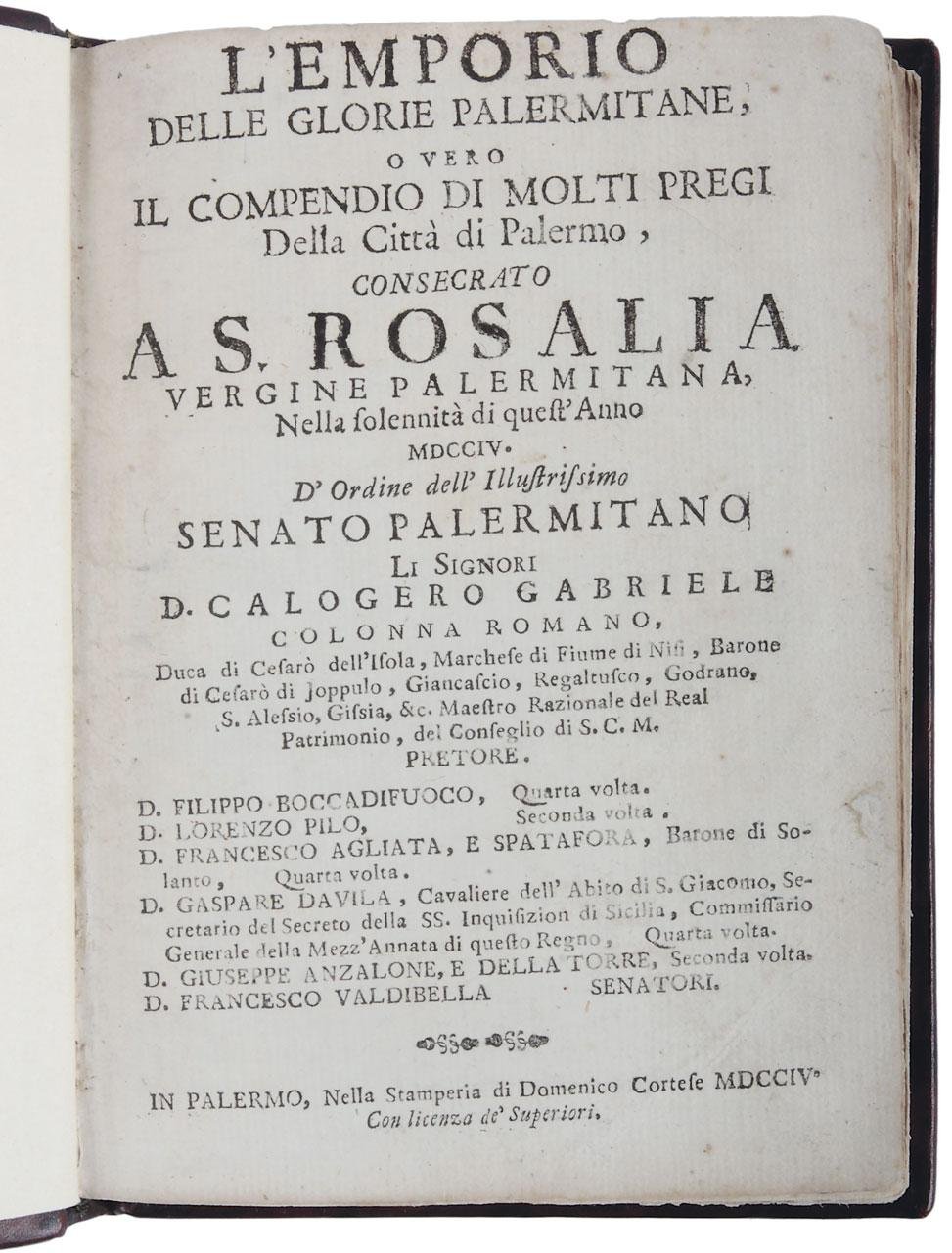
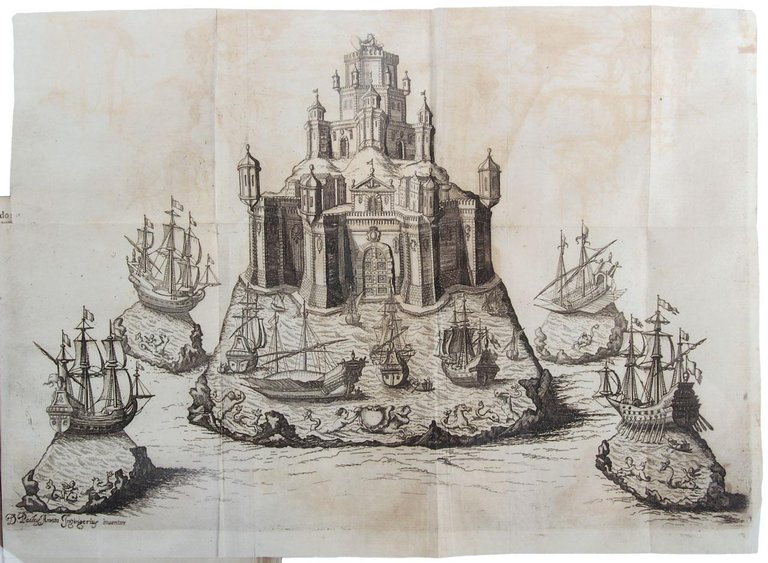
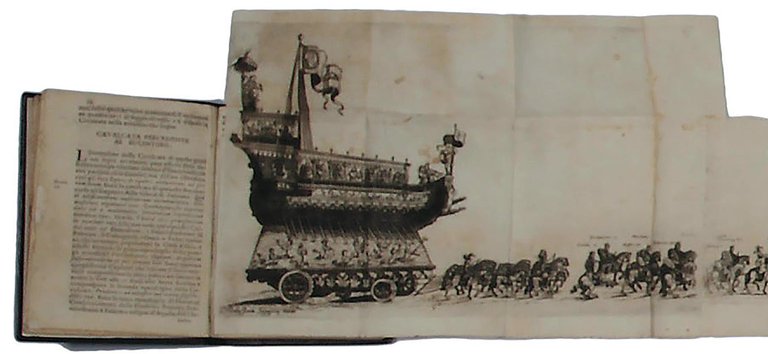
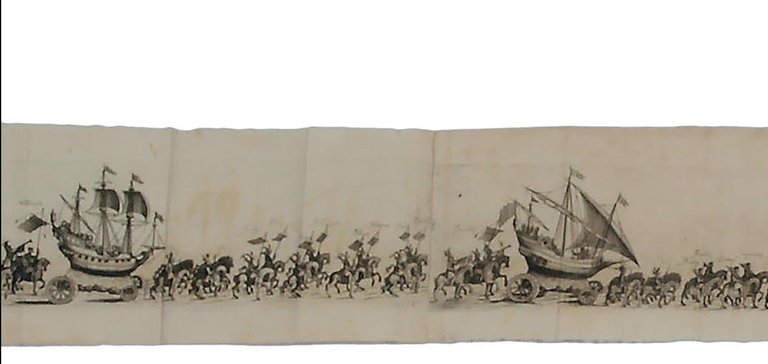
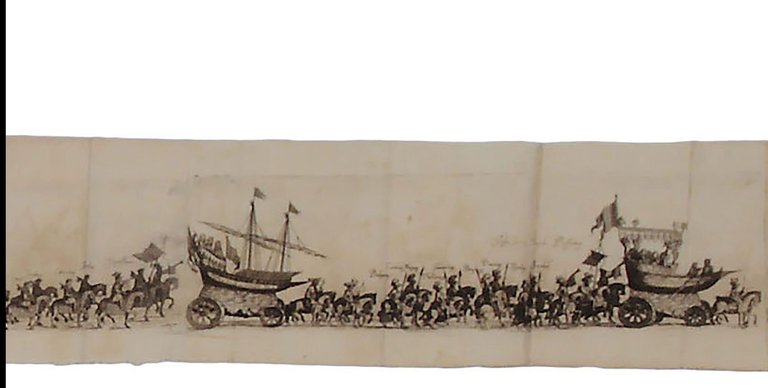


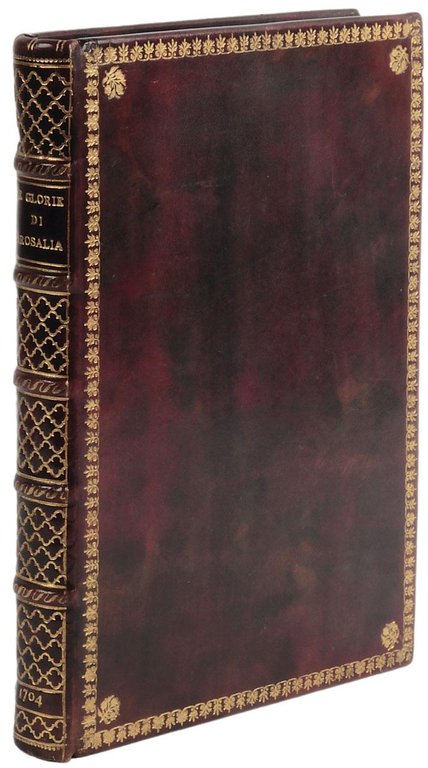
Livres anciens et modernes
VIO, Ignazio de (1659-1749)
L'Emporio delle glorie palermitane, o vero il compendio di molti pregi della Città di Palermo, consecrato a S. Rosalia Vergine Palermitana, nella solennità di quest'anno 1704
Domenico Cortese, 1704
12000,00 €
Govi Libreria Antiquaria
(Modena, Italie)
Les frais d'expédition corrects sont calculés une fois que l'adresse de livraison a été indiquée lors de la création de la commande. Un ou plusieurs modes de livraison sont disponibles à la discrétion du vendeur : standard, express, economy, in store pick-up.
Conditions d'expédition de la Librairie:
Pour les articles dont le prix est supérieur à 300 euros, il est possible de demander un plan de paiement échelonné à Maremagnum. Le paiement peut être effectué avec Carta del Docente, Carta della cultura giovani e del merito, Public Administration.
Les délais de livraison sont estimés en fonction du temps d'expédition de la librairie et de la livraison par le transporteur. En cas de retenue douanière, des retards de livraison peuvent survenir. Les frais de douane éventuels sont à la charge du destinataire.
Pour plus d'informationsMode de Paiement
- PayPal
- Carte bancaire
- Virement bancaire
-
-
Découvrez comment utiliser
votre Carta del Docente -
Découvrez comment utiliser
votre Carta della cultura giovani e del merito
Détails
Description
First edition of the description of the festivals held in Palermo, in the year 1704, honoring patron Saint Rosalia. The text is attributed to Ignazio Vio in the dedication. The plates are signed by Paolo Amato, the designer and inventor of all the apparatuses. Amato was an engineer and architect in charge of the decorations for almost all Palermo festivities between the 1680s and 1714, the year of his death. Particularly impressive is one of the folding plates, showing a procession of chariots looking like galleons, which measures 1098 mm of length. The other plates show an incredible firework machine built as a castle on an island surrounded by boats, church apparatuses, and an arch.
“Con la llegada de la dinastia Borbón al solio español, el festino se enriquecerà con nuovos tipos de decoración; en los palacios públicos y privados, arcos triumfales, etc. Así los vemos en las últimas celebraciones del Palermo español, entre 1701 y 1713… En 1704 el carro de la santa fue sostituido por un simulacro del Bucintoro de Venecia y la máquina de fuegos se presentó come un castillo sobre una isla, rodeado de barcos…” (M. Cornelles, V. Manuel et al., eds., La fiesta barroca. Los reinos de Nápoles y Sicilia (1535-1713), Palermo, 2014).
“Nel 1686 il ‘valente inventore' dei principali allestimenti è Paolo Amato, il più talentuoso progettista dell'effimero che dominerà la scena palermitana fino al 1714, anno della sua morte; al di là delle iperboli retoriche utilizzate nei ragguagli a prassi festiva trova realmente in Amato l'inteprete più congeniale. Forse proprio attraverso la pratica dell'effimero egli riesce a maturare un linguaggio eterodosso e destrutturato, fondato sulla continua ibridazione di elementi naturalistici e architettonici; in tal modo è in grado di ridurre al minimo le gerarchie sintattiche, realizzando i suoi allestimenti secondo un continuum compositivo che annulla quasi completamente la distanza tra effimero e costruito: gli spettacolari apparati a marmi mischi che egli realizza in tante chiese palermitane ne sono una prova lampante” (M. Sofia di Fede, La festa barocca a Palermo: città, architetture, istituzioni, in: “Espacio, Tiempo y Forma”, series VII, t. 18-19, 2005-2006, p. 65).
Ignazio de Vio was a Jesuit teacher of theology, mathematics and Hebrew. Between 1693 and 1704 he published several works on the festivity of Santa Rosalia.
Catalogo unico, IT\ICCU\RMSE\007911; Melzi, I, 355; Sommervogel, VIII, col. 831.

